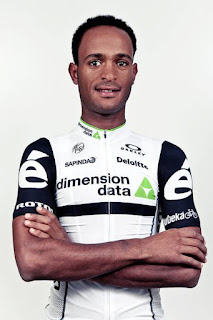Scott Sports step up to become co-title-sponsor of the Australian
WorldTour team for the 2017 season
Australian WorldTour team Orica-BikeExchange
will be known as Orica-Scott from the start of th
e 2017 season, as bike manufacturer Scott Sports steps up to become co-title-sponsor.
Scott bikes have been associated with the squad since their debut as GreenEdge Cycling in 2012, but now the manufacturer has upped its commitment. Both the men’s and women’s teams will now race under the same name – the women’s squad was previously known as Orica-AIS.
Multi-national mining company Orica continues as co-title-sponsor.
Orica-Scott team manager Shane Bannan said: “We are thrilled to have Scott step up into a major, co-naming rights sponsor for our team. Their progression as a sponsor follows ours as a team and together we believe the partnership will achieve great things in the coming years.”
WorldTour team for the 2017 season
 |
| Orica-Scott 2017 |
e 2017 season, as bike manufacturer Scott Sports steps up to become co-title-sponsor.
Scott bikes have been associated with the squad since their debut as GreenEdge Cycling in 2012, but now the manufacturer has upped its commitment. Both the men’s and women’s teams will now race under the same name – the women’s squad was previously known as Orica-AIS.
Multi-national mining company Orica continues as co-title-sponsor.
Orica-Scott team manager Shane Bannan said: “We are thrilled to have Scott step up into a major, co-naming rights sponsor for our team. Their progression as a sponsor follows ours as a team and together we believe the partnership will achieve great things in the coming years.”
“We are committed to providing our men
and women the best environment and equipment to achieve maximum results.
Scott Sports’ dedication to this cause, right from day one, has
already seen us come a long way since our inception. Now, together, we
look forward to taking the next major steps.
“After a breakout 2016 season, we are extremely excited for what 2017 holds for us.” To reflect the new sponsor, the team’s kit has been redesigned for 2017. The clothing now features a dark blue background with bright green highlights, with no white sections as have previously been included – not all that dissimilar to Movistar’s kit.Having previously been focussed on one-day race and stage wins, the team made significant inroads during the 2016 season into forming into a Grand Tour challenging squad.
“After a breakout 2016 season, we are extremely excited for what 2017 holds for us.” To reflect the new sponsor, the team’s kit has been redesigned for 2017. The clothing now features a dark blue background with bright green highlights, with no white sections as have previously been included – not all that dissimilar to Movistar’s kit.Having previously been focussed on one-day race and stage wins, the team made significant inroads during the 2016 season into forming into a Grand Tour challenging squad.
Colombian Esteban Chaves
made two Grand Tour podium appearances, placing second in the Giro
d’Italia and third in the Vuelta a España. British twin brothers Adam and Simon Yates
also continued their Grand Tour progression, with Adam claiming the
white jersey of best young rider in the Tour de France after placing
fourth overall. Simon won stage six of the Vuelta.
In addition, the team won two Monuments, with Mathew Hayman winning Paris-Roubaix in the spring and Chaves winning Il Lombardia in the autumn.
Orica-Scott will makes its official debut on January 1 in Australia, with the team taking part in the Mitchelton Bay Cycling Classic. In 2016, Caleb Ewan and Gracie Elvin took victories in the respective men’s and women’s events for the team.
Read More
http://www.cyclingweekly.co.uk/news/latest-news/orica-bikeexchange-changes-name-orica-scott-2017-303750?utm_source=Facebook&utm_medium=Social
In addition, the team won two Monuments, with Mathew Hayman winning Paris-Roubaix in the spring and Chaves winning Il Lombardia in the autumn.
Orica-Scott will makes its official debut on January 1 in Australia, with the team taking part in the Mitchelton Bay Cycling Classic. In 2016, Caleb Ewan and Gracie Elvin took victories in the respective men’s and women’s events for the team.
Read More
http://www.cyclingweekly.co.uk/news/latest-news/orica-bikeexchange-changes-name-orica-scott-2017-303750?utm_source=Facebook&utm_medium=Social








